NYC’s Forgotten ‘War on Christmas Trees’
Discover how an obscure holiday crackdown affects festive street vendors today!


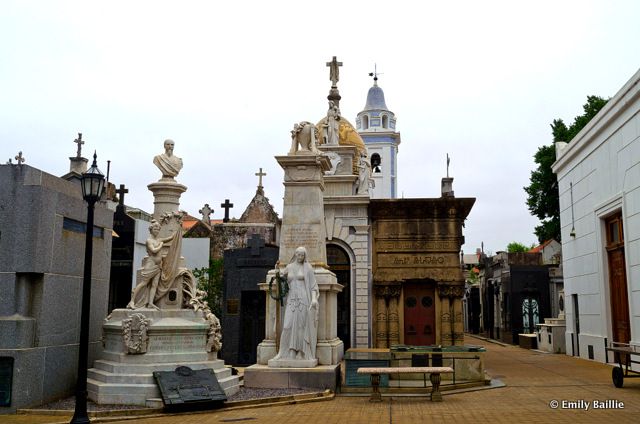
When Argentina’s wealthy and powerful rest for eternity, they do it in style. Recoleta cemetery is one of the world’s most extraordinary graveyards, with over 6,400 grandiose mausoleums resembling Gothic chapels, Greek temples, fairytale grottoes and elegant little houses. The exclusive cemetery is the last stop for the country’s most celebrated (and controversial) presidents, intellectuals, army generals and entertainers, and a popular attraction for visitors to Buenos Aires.
Though the cemetery most famously holds the remains of actress-turned-First Lady Eva Perón (also known as Evita), many of Recoleta cemetery’s less internationally known residents are buried in masterpiece mausoleums, many with dramatic and intriguing stories behind them. Here is a look at 10 tombs to visit in Recoleta Cemetery.
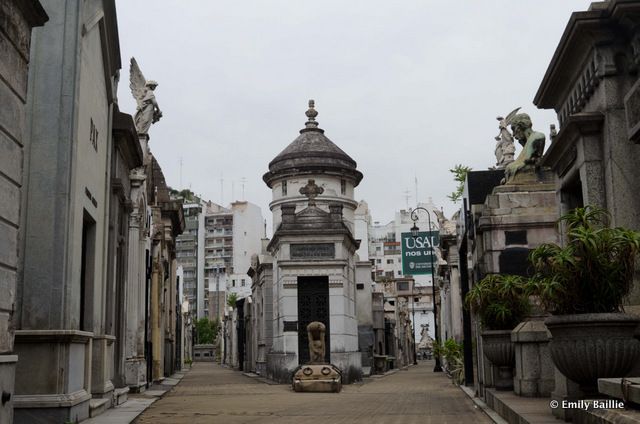
No one goes to Recoleta cemetery without a visit to Evita’s grave. By Recoleta standards, however, it is quite nondescript. Three years after former First Lady Perón died of cancer in 1952, her body was removed by the Argentine military in the wake of a coup that deposed her husband, President Juan Perón. The body then went on a transatlantic odyssey for nearly twenty years before finally being returned to the Duarte family mausoleum in Recoleta Cemetery. She now lies in a crypt five meters underground, heavily fortified to ensure that no one can disturb the remains of Argentina’s most beloved and controversial First Lady.
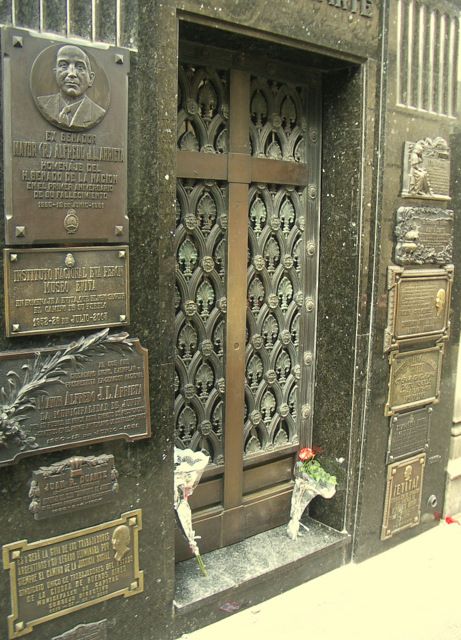
Image via Wikipedia under Creative Commons license
Young Isabel was the illegitimate grandchild of Napoleón Bonaparte, born in Buenos Aires and died aged 6 days. She was the daughter of Alexandre Florian Joseph, a Polish and French politician and diplomat, who was widely rumoured to be the illegitimate son of Napoleon I by his mistress, Countess Marie Walewska.
The family pantheon of Dorrego-Ortiz Basualdo is one of the largest and most majestic structures in Recoleta cemetery. The mausoleum, built for the members of a wealthy landowner family, features a sculpted virgin lighting a seven-branched candelabrum.
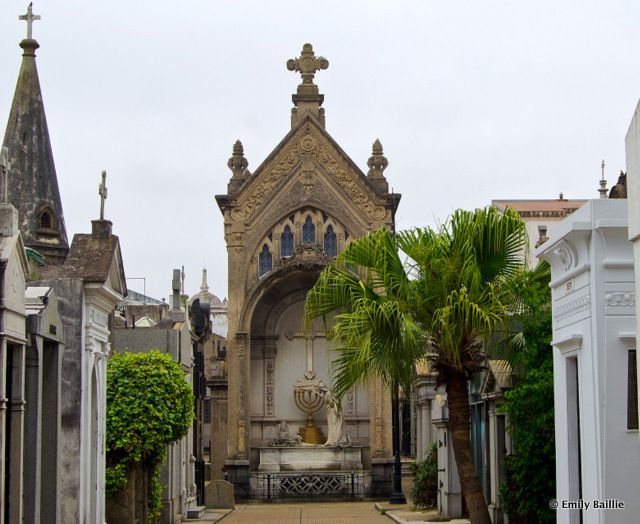
This young Argentine woman had perhaps gone into coma in 1902 and was pronounced dead at age 19. A few days after her burial, workers heard screams from her tomb. When it was opened, there were scratches on her face and on the coffin from her attempts to escape. Her mother then built a grand Art Nouveau tomb with sculpted orchids and a soulful statue of the young woman. Though the story of her tragic death has never been verified, it has captured the hearts of thousands of visitors to Rufina’s grave.
According to the Argentine folk legend, Italian gravedigger David Alleno worked for thirty years in Recoleta cemetery, saving his wages throughout his life for his very own plot in the burial ground. After commissioning an Italian architect to sculpt a statue of him, he put the finishing touches on the precious spot then went home and killed himself. Many reputable sources say he died years after the tomb was constructed, yet rumours that he haunts the cemetery at night still persist. As the legend goes, one can still hear the noise of his keys as he walks the narrow streets before dawn.
An Argentine boxer nicknamed The Wild Bull of The Pampas, Luis Ángel Firpo was wildly popular across Latin America in the 1920s. On his passing in 1960, he was buried in a vault behind a life-sized statue of him in his boxing uniform. In 2003, he was named as one of the 100 greatest punchers of all time.

Admiral Guillermo Brown, also known as William Brown, was an Irish-born Admiral and founder of the Argentine Navy. His tomb features sea and sailing carvings, and the mausoleum was partially built with melted down bronze from the canons of the battleships he once commanded. The exterior of the tomb is painted green in honour of his Irish heritage.

Photo Credit: Claudio Elias
Twenty-six-year-old Liliana Crociati de Szaszak was in Innsbruck, Austria in February 1970, when she was killed by an avalanche. Her tomb was designed by her mother in the Neo-Gothic style, in decided contrast to the other tombs in the cemetery. A life-size green bronze statue of Liliana in her wedding dress sits adjacent to her tomb. Following the death of Liliana’s beloved dog Sabú, a bronze statue of the dog was added, with Liliana’s hand resting on the dog’s head.
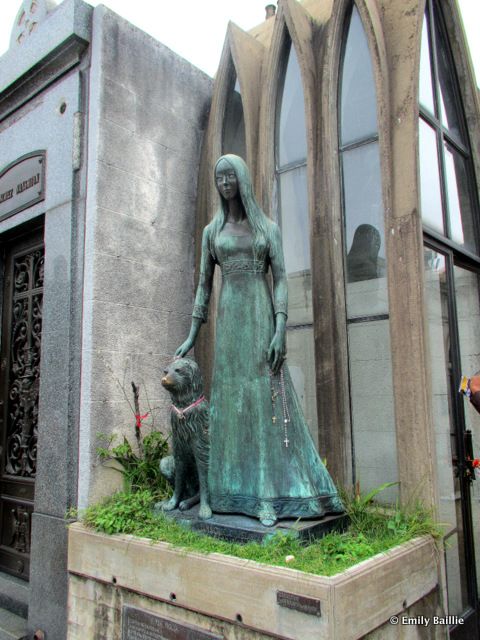
When Argentina’s seventh President died in Paraguay at the age of 77, a soaring obelisk crowned with a huge condor was erected to mark his tomb. Sarmiento is remembered for promoting education for Argentine children and women, and democracy for Latin America. Sarmiento designed his ostentatious tomb himself before his death.
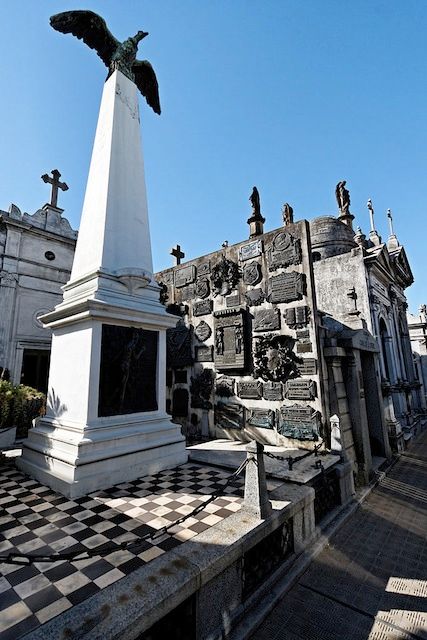
Photo Credit: Wikimedia Commons by Barcex
A General in the Argentine War of Independence, Guido joined the revolution of May 1810, helping to negotiate independence from Spain. His son, poet and politician Carlos Guido y Spano, built his father’s stony vault in tribute, with his own hands.
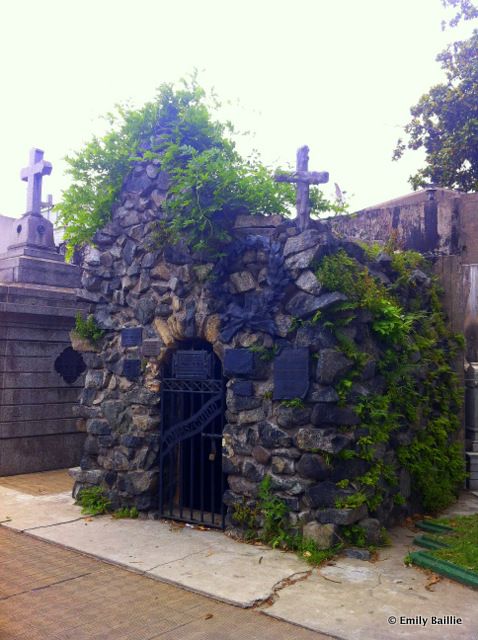
Get in touch with the author @EmilyBaillie.
Subscribe to our newsletter